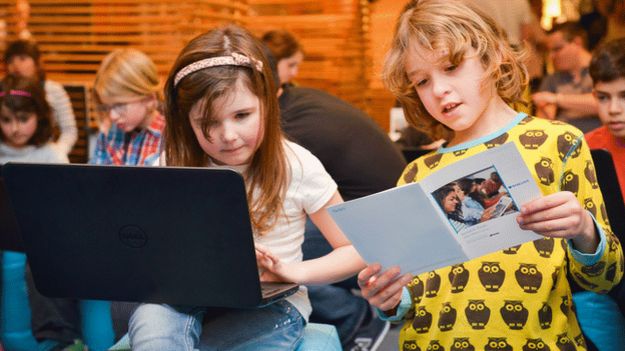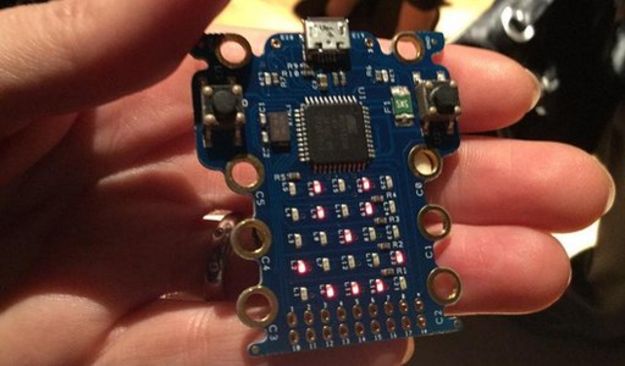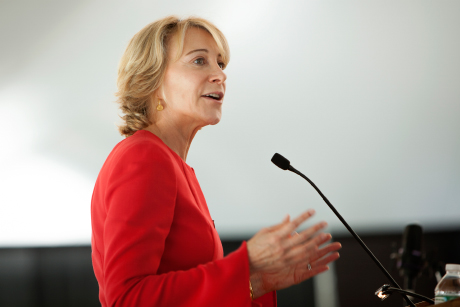教育人行道 7號 On Educating, No. 7
2008/1/12 (創刊: 2008/01/05) 主編:鍾漢清
Quote from W. Edwards Deming:
The process is not just the sum of its parts.
The process is not just the sum of its parts.
Quote from W. Edwards Deming:
Without theory, there are no questions.
Without theory, there are no questions.
沒有所謂標準答案
在國內,老師或家長,甚至學生們,大概都對所謂「標準答案」習以為常,所以很難容忍沒有所謂「正確解答」的問題。
在國內,老師或家長,甚至學生們,大概都對所謂「標準答案」習以為常,所以很難容忍沒有所謂「正確解答」的問題。
譬如,有位老師問道:「光速多快?」如果你讀過相關的科學史,大概會發現,近百年來,它的測量值至少有幾十組,而每組都不同,這要看當時測量系統的精密、準確程度而定。換句話說,世界上沒有所謂的「真值(TRUE VALUE)」。
看了美國電機電子工程學會(IEEE)刊物上有篇文章,才曉得美國曾經有道考題:「何謂歐姆三定律?」
其「標準答案」是:E=I×R;I=E/R;R=E/I。
其實,很多人會認為,如果分母不為零的話,上面所謂三大定律,不過是同義,即,應是同一定律的不同表示法。雖然,有些老師會說,其中每一式子的解釋能力,甚至應用場合,都是不同的。
目前,許多考試都用複選題方式出題,以便利閱卷。其實,這是很偷懶,不負責任的方法,因為高品質的複選題,幾乎是很難「設計」出來的。
所以,最有彈性、深度的問題,應該是開放式申論題,即使考題是科學科目,也是如此。
我不妨用英國某大學作法為例說明:
不管學生選修的組別為何,假設共分三組,那麼各科出一百分,所以採不分組別方式會考,每張試卷的總分為三百分,學生考試時可以不論其主修,任選題回答--如果你有本事或膽量,大可跨組作答。這種方式,每題甚至可依難易再分為三道小題,分數則用幾何級數加權,即,每題的子題,愈難者加權愈重,鼓勵學生深入答題,而非蜻蜓點水,只知道一些表面的東西。
不管學生選修的組別為何,假設共分三組,那麼各科出一百分,所以採不分組別方式會考,每張試卷的總分為三百分,學生考試時可以不論其主修,任選題回答--如果你有本事或膽量,大可跨組作答。這種方式,每題甚至可依難易再分為三道小題,分數則用幾何級數加權,即,每題的子題,愈難者加權愈重,鼓勵學生深入答題,而非蜻蜓點水,只知道一些表面的東西。
由於是申論題,對同一組考題,對於考核研究生與大學生,標準嚴格就不一(這完全由教授自由心證)。合格基準對於研究生為五十分,大學生為四十分。
其實,這種考題是考「真功夫」,也才能測出學生了解的深度。可惜,這種考法,對於出題者很吃力,更何況要他們「自由心證」來給分(當然,考生要匿名),所以在台灣很不受歡迎。
中學畢業三十年後,再回頭看看理化等科學教科書,一來聽說有老師是用「三讀通過法」(即念三次就交差了事),二來看看大部份教的,多是很獨斷、很天真的東西,不禁令人悵然若失。事實上,在實際的研究或應用領域中,每個人對於簡單的問題,也得大費周章、小心從頭(最基本)求解,不會有所謂的標準解答。
有人說:「科學家的任務並不是尋求最後答案,而是盡力去取得最好的部份答案,使別人因此可以懷存信心去研討未知的事情,從而得到更好的答案。」說得不錯,對於許多書本的標準答案,太快就相信它們,這算是迷信吧!
所以,很多時候,「品質」要從探索過程中去追求,而不是找標準答案。李政道博士在諾貝爾物理獎頒發致答謝辭時說過:「在追求知識過程中,可能進步迅速,像西遊記中的孫行者,但是我們必須記住,即使我們翻到如來佛的手指根上,距離真理仍極遙遠。」(鍾漢清--1995年10月20日--)
培養有思考能力的學生:問題不在答案是什麼?而在思考能不能展開四方。
核子物理學之父歐尼斯特‧拉瑟福當他在擔任英國皇家學院校長時,有一天接到一位教授打來的電話:「校長大人,我有個不情之請,要拜託你幫忙。」
「大家都是老同事,幹嘛這麼客氣?」
「是這樣的,我出了一道物理學的考題,給了一個學生零分,但這個學生堅持他應該得到滿分。
我和學生同意找一個公平的仲裁人,想來想去就閣下你最合適…… 」
「你出的是什麼題目?」
「題目是:如何利用氣壓計測量一座大樓的高度?」
「校長大人如果是你怎麼回答?」
「還不簡單,用氣壓計測出地面的氣壓,再到頂樓測出樓頂的氣壓,兩壓相差換算回來,答案就出來了。當然也可以先上樓頂量氣壓,再下到地面量氣壓。只要是本校的學生都應該答得出來。」
「對,你猜這個學生怎麼答?他答說:先把氣壓計拿到頂樓,然後綁上一根繩子,再把氣壓計垂到一樓,在繩子上做好記號,把氣壓計拉上來,測量繩子的長度,繩子有多長,大樓就有多高。」
「哈,這傢夥挺滑頭的。不過,他確實是用氣壓計測出大樓的高度,不應該得到零分吧?」
「他是答出一個答案,但是這個答案不是物理學上的答案,沒辦法表示他可以合格升等到下一個進階的課程啊!」
拉瑟福第二天把學生找到辦公室,給學生六分鐘的時間,請他就同樣的問題,再作答一次。拉瑟福特別提醒答案要能顯示物理學的程度。
一分,兩分,三分,四分,五分鐘過去了,拉瑟福看學生的紙上仍然一片空白,便問:「你是想放棄嗎?」
「噢!不,拉瑟福校長,我沒有要放棄。這個題目的答案很多,我在想用哪一個來作答比較好,你跟我講話的同時,我正好想到一個挺合適的答案呢!」
「對不起,打擾你作答,我會把問話的時間扣除,請繼續。」
學生聽完,迅速在白紙上寫下答案:把氣壓計拿到頂樓,丟下去,用碼錶計算氣壓計落下的時間,用x = 0.5 × a × t2 的公式,就可以算出大樓的高度。
拉瑟福轉頭問他的同事,說:「你看怎樣?」
「我同意給他九十九分。」
「同學,我看事情就等你同意,便可以圓滿解決。」
「校長,教授,我接受這個分數。」
「同學,我很好奇,你說有很多答案,可不可以說幾個來聽聽?」
「答案太多了,」學生說:「你可以在晴天時,把氣壓計放在地上,看它的影子有多長,再量出氣壓計有多高,然後去量大樓的影子長度,同比例就算出大樓的高度。」
「還有一種非常基本的方法,你帶著氣壓計爬樓梯,一邊爬一邊用氣壓計做標記,最後走到頂樓,你做了幾個標記,大樓就是幾個氣壓計的高度。」
「還有複雜的辦法,你可以把氣壓計綁在一根繩子的末端,把它像鐘擺一樣擺動透過重力在樓頂和樓底的差別,來計算大樓的高度。或者把氣壓計垂到即將落地的位置,一樣像鐘擺來擺動它,再根據『徑動』的時間長短來計算大樓的高度。」
「好孩子,這才像上過皇家學院物理課的學生。」
「當然,方法是很多,或許最好的方法就是把氣壓計帶到地下室找管理員,跟他說:先生,這是一根很棒的氣壓計,價錢不便宜,如果你告訴我大樓有多高,我就把這個氣壓計送給你。」
「我問你,你真的不知道這個問題傳統的標準答案嗎?」
「我當然知道,校長。」學生說:「我不是沒事愛搗蛋。從小到大,我已經厭倦老師不斷教導我們如何去思考,如何去使用『科學的方法』,而不是教導我們去認識事物的構造與本質。因此,我才以這種玩笑的方式來表達我的抗議。」
拉瑟福遇到的這位敢於挑戰老師固有思維方式的學生是誰呢?
他就是大名鼎鼎的尼爾斯‧波爾﹝Niels Bohr﹞,丹麥人,他後來成為著名的物理學家,在1922年得到諾貝爾獎。
PS:這個故事是拉塞福在1908年領取諾貝爾獎(化學獎)時說的故事。根據考證,波耳(N. Bohr,1885~1962)是丹麥人,1903~1907年期間在丹麥哥本哈根大學大學部就讀。他在拿到哥本哈根大學的博士學位後,於1911年赴英 國劍橋大學卡文迪西實驗室學習和工作,1912年到曼徹斯特大學拉塞福的實驗室裡工作了四個月。
因此,根據推測,拉塞福所提到的這位學生很可能不是波耳。
這一個廣為流傳的故事,第一次是出現在1958年的讀者文摘(Reader's Digest),故事可能是真的,但主角應該不是拉塞福和波耳
*****
張忠樸先生有本文集: 【人生的不標準答案】等
-----
2016.3.31
「是這樣的,我出了一道物理學的考題,給了一個學生零分,但這個學生堅持他應該得到滿分。
我和學生同意找一個公平的仲裁人,想來想去就閣下你最合適…… 」
「你出的是什麼題目?」
「題目是:如何利用氣壓計測量一座大樓的高度?」
「校長大人如果是你怎麼回答?」
「還不簡單,用氣壓計測出地面的氣壓,再到頂樓測出樓頂的氣壓,兩壓相差換算回來,答案就出來了。當然也可以先上樓頂量氣壓,再下到地面量氣壓。只要是本校的學生都應該答得出來。」
「對,你猜這個學生怎麼答?他答說:先把氣壓計拿到頂樓,然後綁上一根繩子,再把氣壓計垂到一樓,在繩子上做好記號,把氣壓計拉上來,測量繩子的長度,繩子有多長,大樓就有多高。」
「哈,這傢夥挺滑頭的。不過,他確實是用氣壓計測出大樓的高度,不應該得到零分吧?」
「他是答出一個答案,但是這個答案不是物理學上的答案,沒辦法表示他可以合格升等到下一個進階的課程啊!」
拉瑟福第二天把學生找到辦公室,給學生六分鐘的時間,請他就同樣的問題,再作答一次。拉瑟福特別提醒答案要能顯示物理學的程度。
一分,兩分,三分,四分,五分鐘過去了,拉瑟福看學生的紙上仍然一片空白,便問:「你是想放棄嗎?」
「噢!不,拉瑟福校長,我沒有要放棄。這個題目的答案很多,我在想用哪一個來作答比較好,你跟我講話的同時,我正好想到一個挺合適的答案呢!」
「對不起,打擾你作答,我會把問話的時間扣除,請繼續。」
學生聽完,迅速在白紙上寫下答案:把氣壓計拿到頂樓,丟下去,用碼錶計算氣壓計落下的時間,用x = 0.5 × a × t2 的公式,就可以算出大樓的高度。
拉瑟福轉頭問他的同事,說:「你看怎樣?」
「我同意給他九十九分。」
「同學,我看事情就等你同意,便可以圓滿解決。」
「校長,教授,我接受這個分數。」
「同學,我很好奇,你說有很多答案,可不可以說幾個來聽聽?」
「答案太多了,」學生說:「你可以在晴天時,把氣壓計放在地上,看它的影子有多長,再量出氣壓計有多高,然後去量大樓的影子長度,同比例就算出大樓的高度。」
「還有一種非常基本的方法,你帶著氣壓計爬樓梯,一邊爬一邊用氣壓計做標記,最後走到頂樓,你做了幾個標記,大樓就是幾個氣壓計的高度。」
「還有複雜的辦法,你可以把氣壓計綁在一根繩子的末端,把它像鐘擺一樣擺動透過重力在樓頂和樓底的差別,來計算大樓的高度。或者把氣壓計垂到即將落地的位置,一樣像鐘擺來擺動它,再根據『徑動』的時間長短來計算大樓的高度。」
「好孩子,這才像上過皇家學院物理課的學生。」
「當然,方法是很多,或許最好的方法就是把氣壓計帶到地下室找管理員,跟他說:先生,這是一根很棒的氣壓計,價錢不便宜,如果你告訴我大樓有多高,我就把這個氣壓計送給你。」
「我問你,你真的不知道這個問題傳統的標準答案嗎?」
「我當然知道,校長。」學生說:「我不是沒事愛搗蛋。從小到大,我已經厭倦老師不斷教導我們如何去思考,如何去使用『科學的方法』,而不是教導我們去認識事物的構造與本質。因此,我才以這種玩笑的方式來表達我的抗議。」
拉瑟福遇到的這位敢於挑戰老師固有思維方式的學生是誰呢?
他就是大名鼎鼎的尼爾斯‧波爾﹝Niels Bohr﹞,丹麥人,他後來成為著名的物理學家,在1922年得到諾貝爾獎。
PS:這個故事是拉塞福在1908年領取諾貝爾獎(化學獎)時說的故事。根據考證,波耳(N. Bohr,1885~1962)是丹麥人,1903~1907年期間在丹麥哥本哈根大學大學部就讀。他在拿到哥本哈根大學的博士學位後,於1911年赴英 國劍橋大學卡文迪西實驗室學習和工作,1912年到曼徹斯特大學拉塞福的實驗室裡工作了四個月。
因此,根據推測,拉塞福所提到的這位學生很可能不是波耳。
這一個廣為流傳的故事,第一次是出現在1958年的讀者文摘(Reader's Digest),故事可能是真的,但主角應該不是拉塞福和波耳
*****
張忠樸先生有本文集: 【人生的不標準答案】等
-----
2016.3.31
有人問我「思考」到底是什麼?為什麼我指控台灣的教育使得孩子不會「思考」?
卑之無甚高論,「思考」不過就是「多想一點」的意願與習慣。我女兒三、四歲的時候,聽到我和她媽媽談話中說到了「沒有錢了」,她理所當然地反應:「那去提款機領啊!」我們都笑了,一方面是笑她怎麼會知道可以從提款機裡領出錢來,二方面也是笑:唉,真是孩子,她以為沒有錢了只要去提款機領,就一定會有錢。
因為她是個孩子,她看到的、她熟悉的,就是我們每次沒錢了,都去提款機領錢,而且每次都能領到錢。所以她知道的,就是提款機可以領錢。
「思考」不過就是不停留在「去提款機領錢」,而進一步想:為什麼提款機裡會有錢?為什麼我們可以從提款機裡拿到錢?提款機裡的錢到底是誰的?這個道理很簡單,然而難的是讓這樣的道理變成習慣。總是不滿意於表面的答案,總是進一步問,要嘛問:「為什麼這樣?」不然就問:「那再來呢?」
不幸的事實是,我們的教育非但不教孩子問:「為什麼這樣?」「那再來呢?」,而且建立了徹底僵硬的機制,阻止他們這樣問。這項恐怖的機制,就是永遠都要有標準答案的考試。標準答案是思考最大的敵人。人一旦啟動了思考,就必定呈現差異,必然從不同方向、不同層次去問問題、找答案,也就必然有個人的選擇。為什麼提款機裡可以領錢?這麼簡單的問題,一路問下去,可以牽連出多少相關問題來,願意問到多深、多廣,每個人的好奇與選擇,一定不一樣。
那麻煩就來了,有不同的方向、不同的選擇,就沒辦法考試。或者更關鍵的,就沒辦法統一打分數。因而我們的教育中絕對不能問孩子:「一個人沒有錢了怎麼辦?」讓他們去思考、去探究。有孩子會從技術面去看錢放在哪裡、如何領出來;有孩子會從收入面去看人究竟如何賺到錢;有孩子會從支出面好奇人到底怎麼把錢花掉了;有孩子會從社會公平面好奇那為什麼有人總是有錢有人總是沒有錢...唉,這樣就沒辦法考試了。
所以我們的教育體系中,就永遠都只能停留在要孩子記得,沒有錢了,第一,去提款機領;第二,去銀行櫃檯領;第三,找找抽屜裡有沒有忘掉的零錢...我們一定要列出標準答案來。沒有標準答案的,就被排除在教育範圍以外,這樣的教育,和思考絕對是徹底相反的!
於是,這種教育教出來的人,面對任何事情,也就都以為可以有簡單的標準答案,固執地認為大家都應該接受這個標準答案,而且拒絕去多想一點,想得更多更深些。從一個角度看,他們和三、四歲的小孩沒有兩樣,沒錢了就去提款機領嘛,有壞人就趕快把他殺掉嘛!他們拒絕問:「把他殺了,然後呢?」他們拒絕去想:「為什麼把他殺了就能解決問題?」「為什麼會有人跟我們不一樣,能夠對完全無辜的孩子下手?」「如果這種人和我們有完全不一樣的價值觀、生命觀,那為什麼對我們有效的嚇阻手段,也會對他們有效?」「發洩強烈的集體暴力殺人衝動,會讓這個社會更安全,還是更危險?」...
他們拒絕去想,而且痛罵不接受他們的標準答案的人,但沒辦法,就像不想為什麼提款機會有錢不會讓人可以永遠能領到錢一樣,不思考、阻止別人思考,無法讓這些根本的問題,就此消失。












